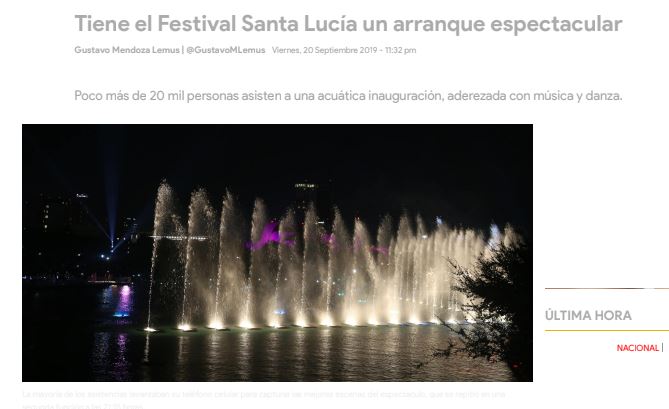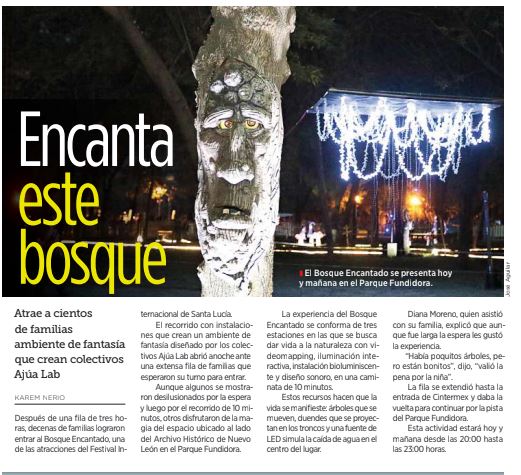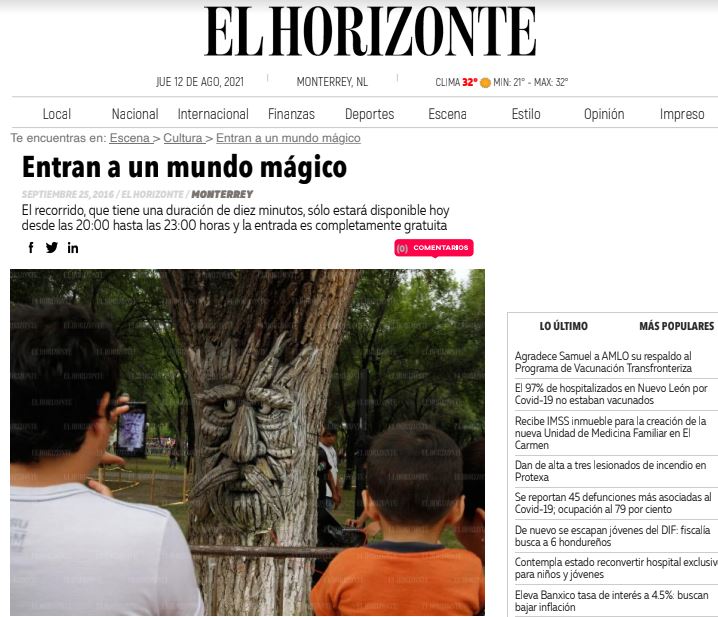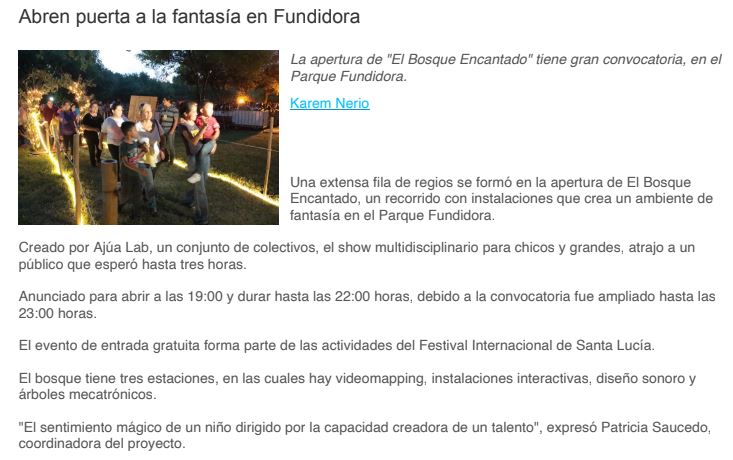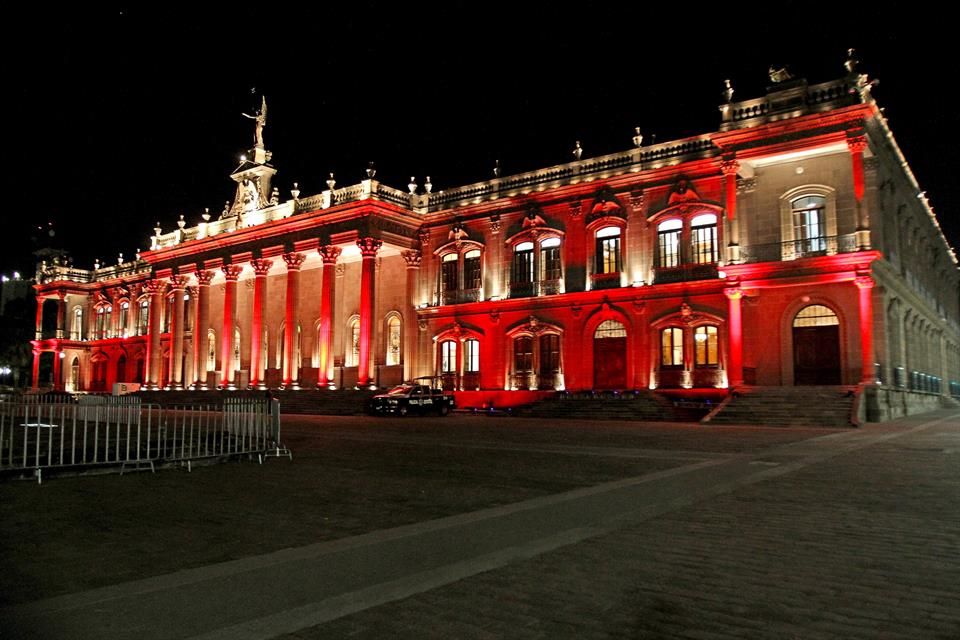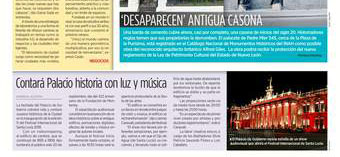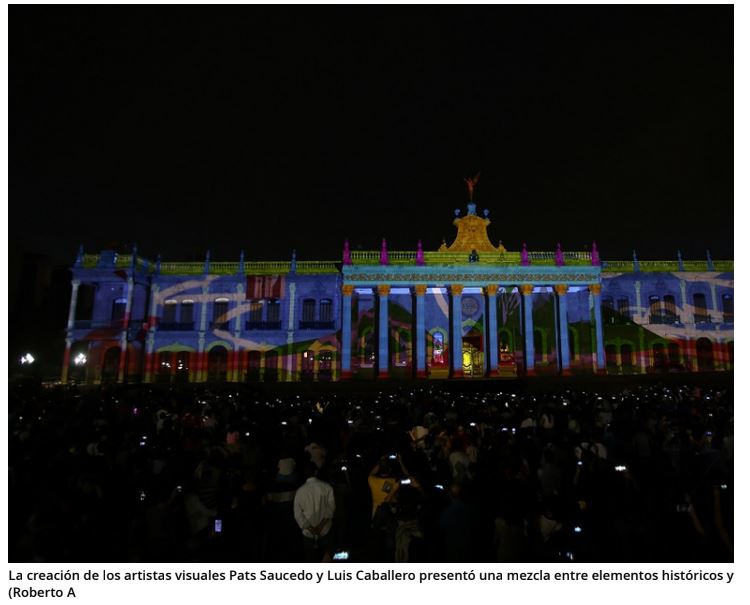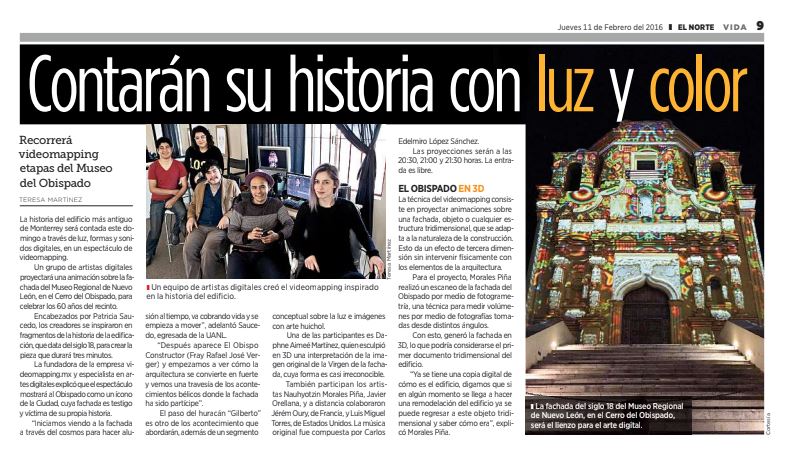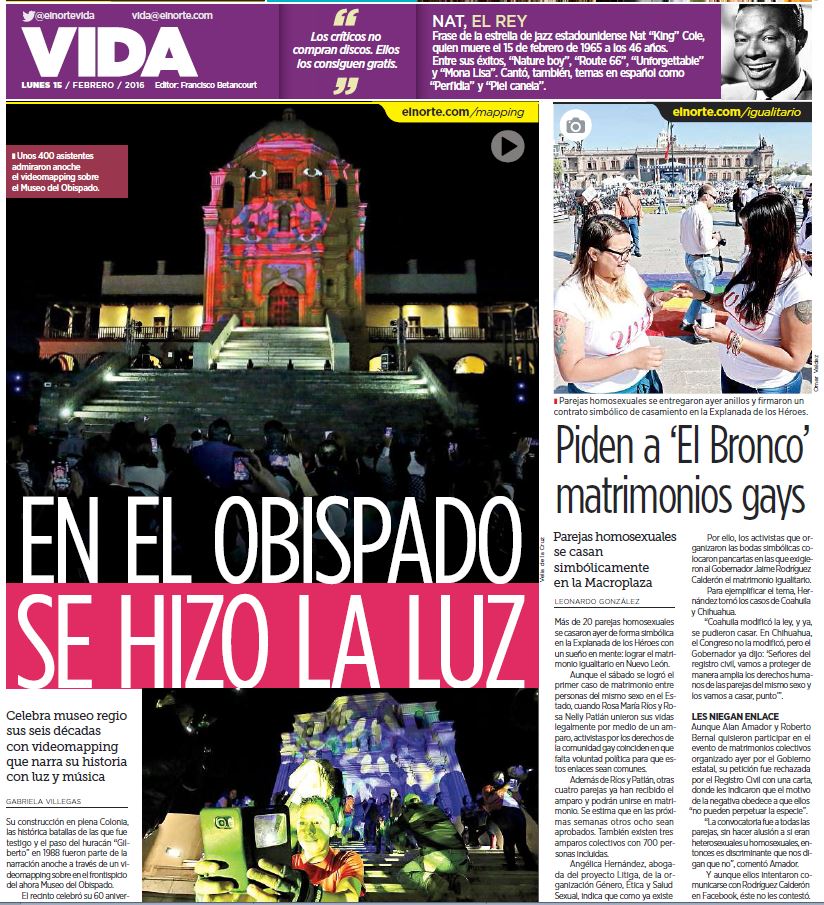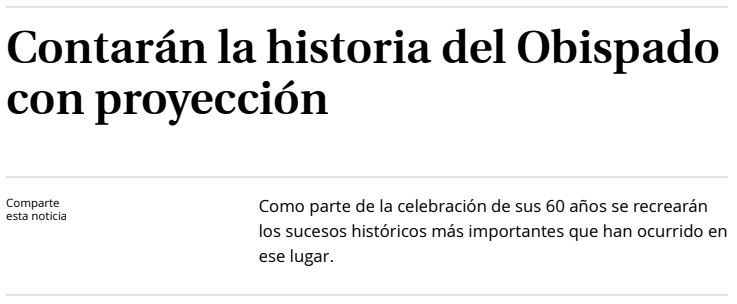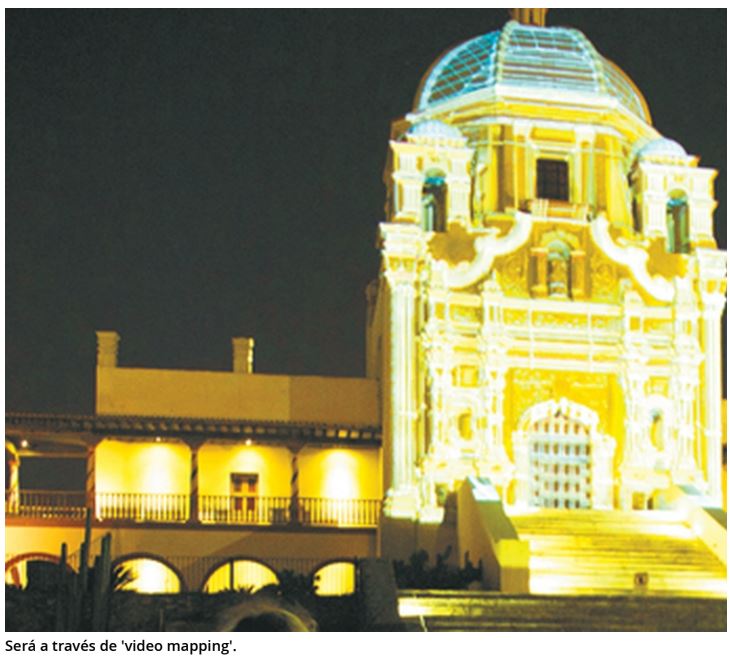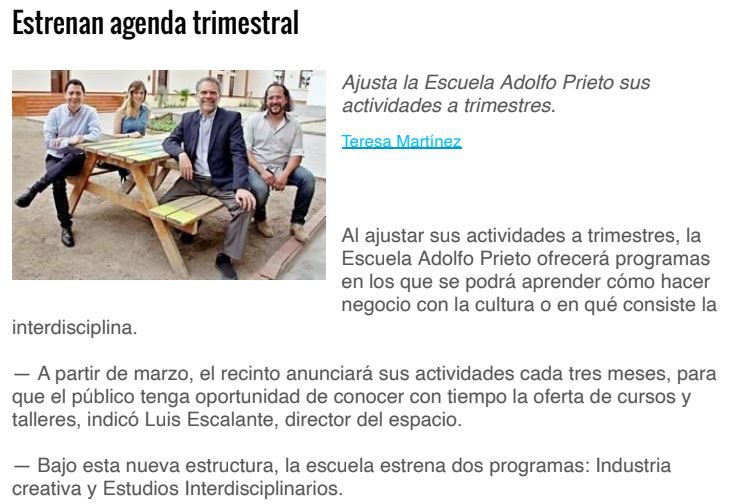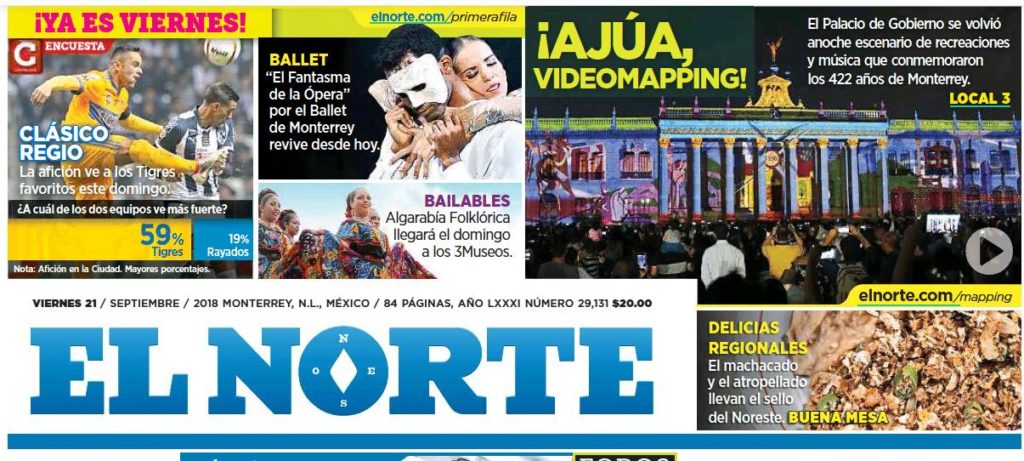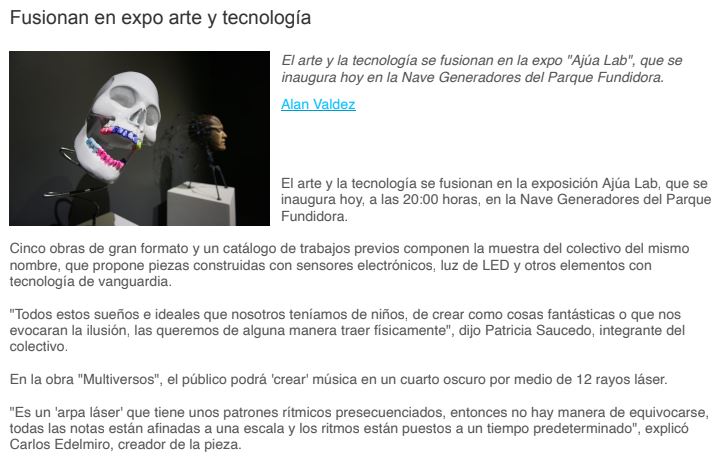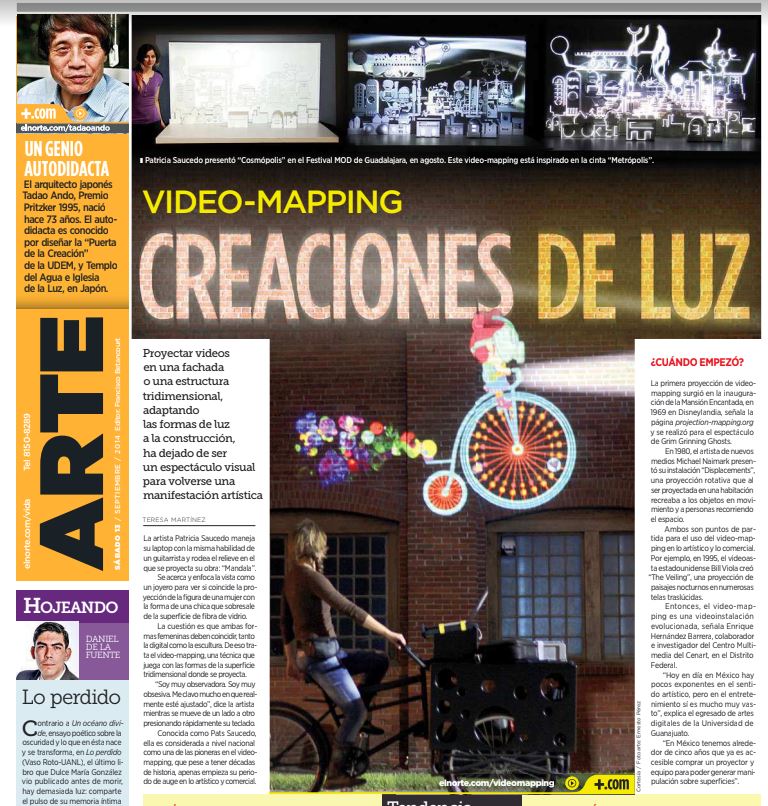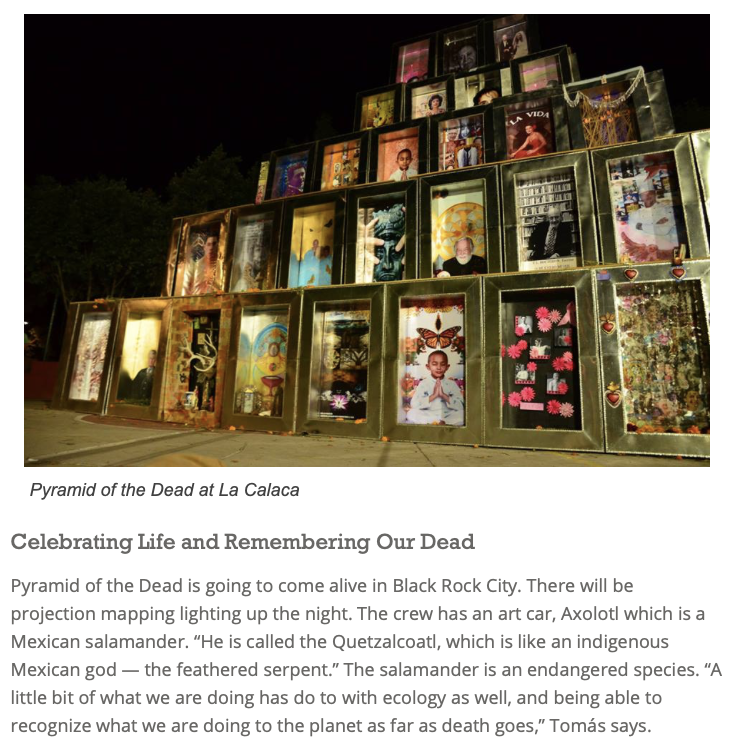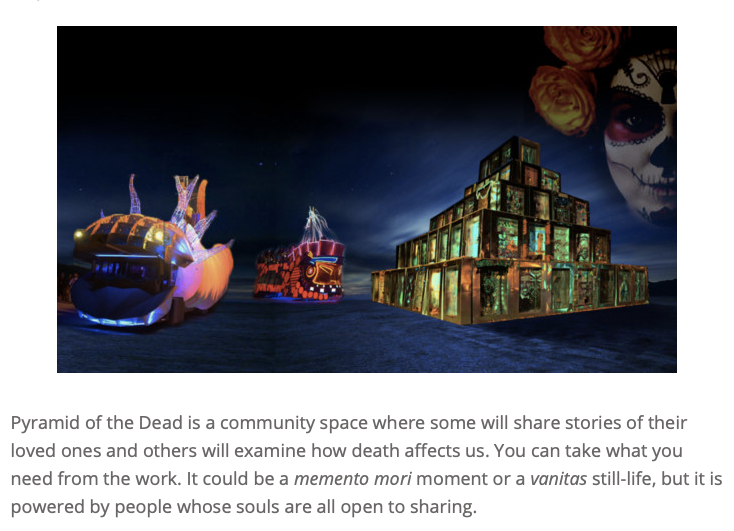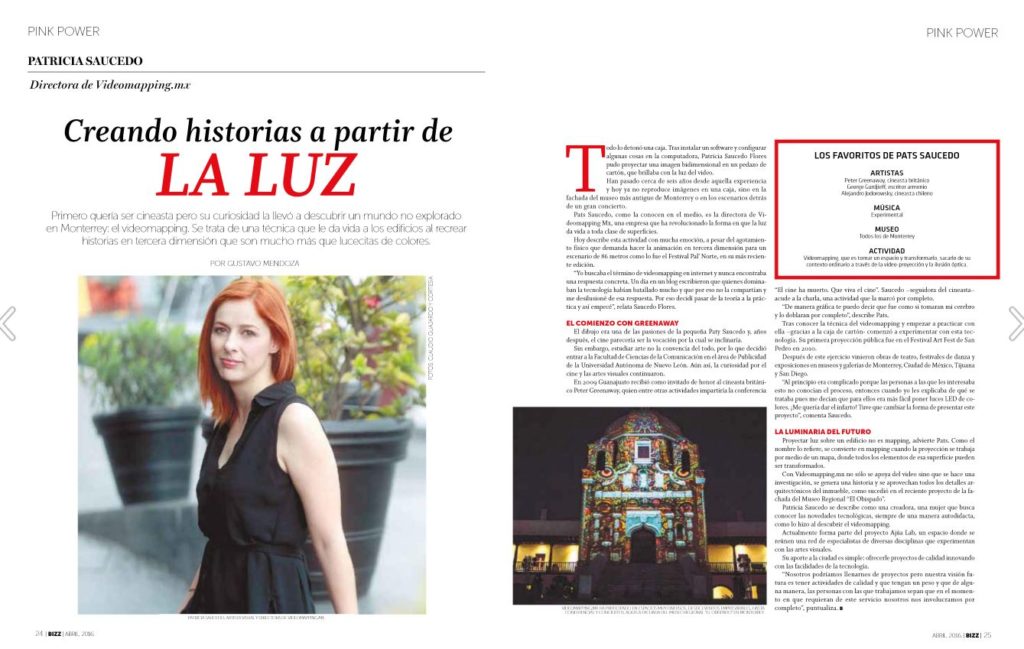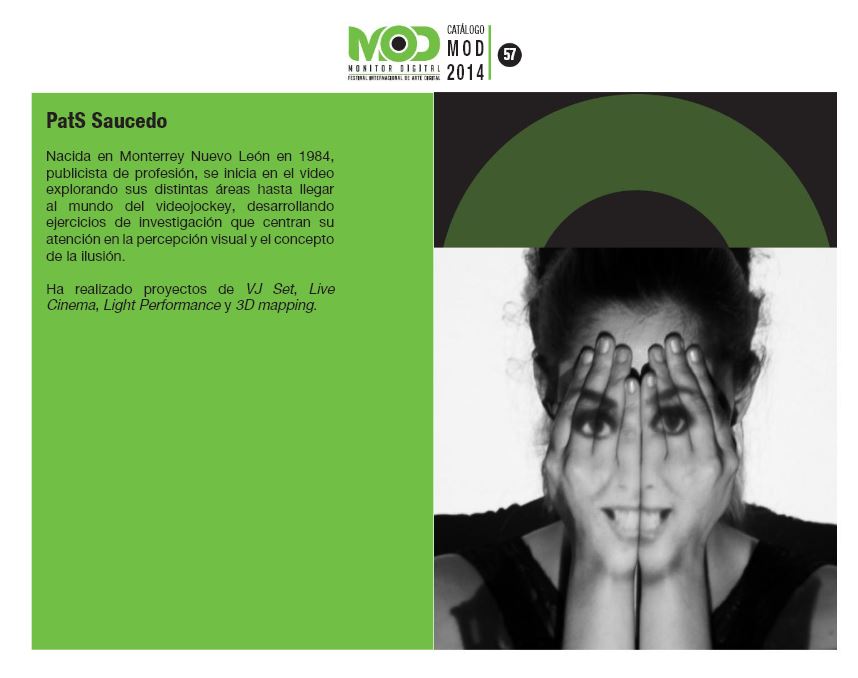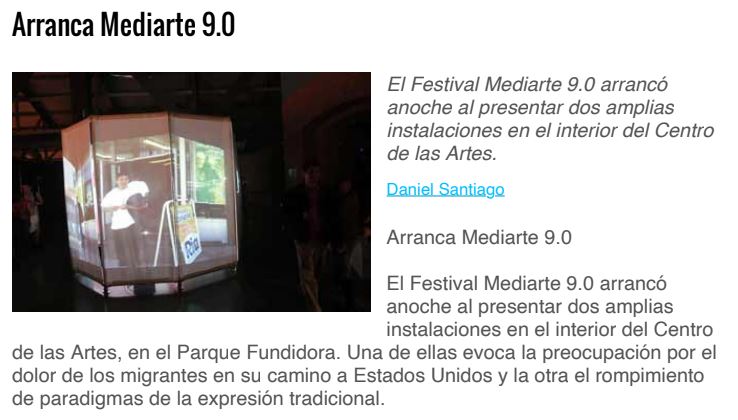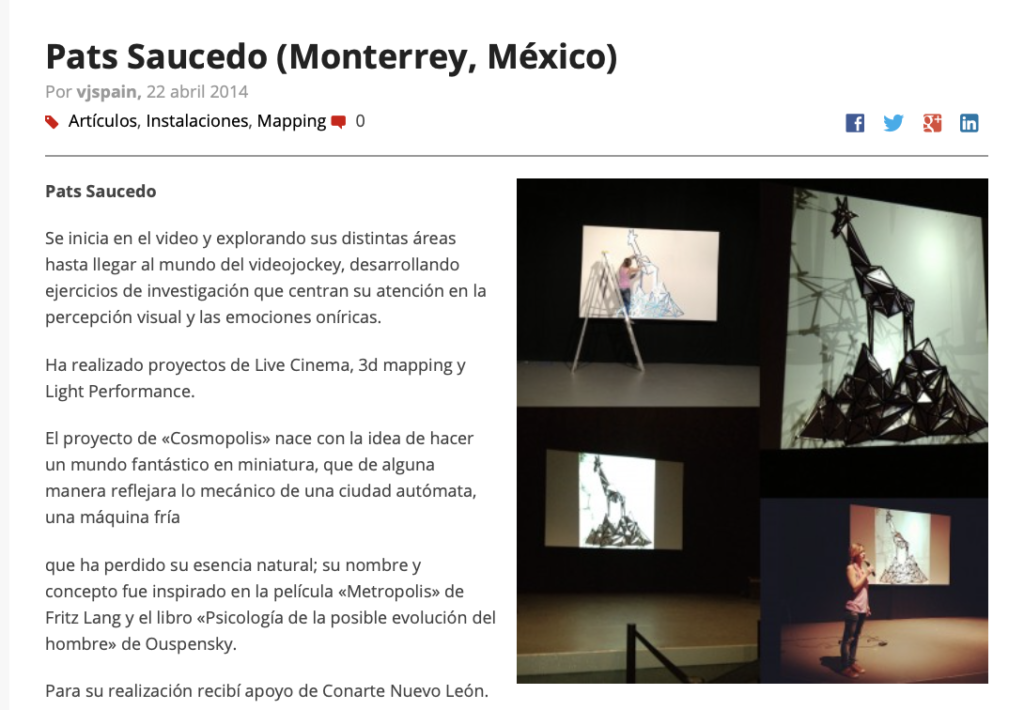CREACIONES DE LUZ (EL NORTE)
Lighting Creations
Teresa Martínez
Monterrey, Mexico (September 13, 2014)
The artist Patricia Saucedo works her laptop with the same ability a guitar player will do and surrounds the setoff where her work “Mandala” is being projected.
She gets closer and focus her sight like a jeweler to check and observe if it matches the projection of a woman silhouette with the form of a girl that stands above the surface of fiberglass.
The inquiry is that both feminine forms shall coincide, the digital one as well as the sculpture. That’s what video-mapping is about, a technique that plays with the tridimensional forms of the surface where its projected.
“I’m very observant. Very obsessive. I get into it a lot to check if it´s well clear up and focus”, says the artist while she moves from one side to other pushing her laptop keypad fast.
Known as Pats Saucedo, she is considered nationally one of the pioneers of video-mapping, although having decades of history it´s just begging its boom into art and commercial.
What is video-mapping?
In a video that is shown with her commercial projects in her official page videomapping.mx Patricia Saucedo explains what this tech tool is about.
It involves projecting videos on a backdrop, object or any tridimensional structure and the projection will be adapted to the nature of the construction. Generally, a team of people will work on this type of set up.
The Elements distinguished this are animated objects in video-mapping that when being projected you can view a style of transformation, giving a tridimensional effect.
“The point is to stir up what you are viewing”, defines the just graduated publicist from “Science and communication Faculty, (Facultad de Ciencias de la comunicacion, UANL.
“To project into a surface and to get it out of its real backdrop to transform it totally, giving it an appearance thanks to the animation effects.”
The process consists on doing a scan of the figure or surface where it will be projected, through a photograph or defining the forms through the projection.
“Once you have this map you can start to play (in the computer) with the traces, the area, the perimeter, and you can start to create this content in animation”, explains the just graduated from the program from High Performance in Contemporary Arts (PARAC).
When did Video-mapping started?
The first projection of video mapping was in Disney’s Haunted Mansion Opening in 1969, the projection-mapping.org tell us and it was done for the show of the Grim Grinning Ghosts
In 1980, the artist of new media Michael Naimark Presented his installation “Displacements”, a rotative Projection that when projected in a room recreated the objects in movements and people moving in that space.
Both are Staring points for the use of video-mapping in arts and commercial
Another example in 1995 American filmmaker Bill Viola created “The Veiling”, a projection of night countries in numerous translucent fabrics.
Then, video-mapping is a video installation evolved, highlight Enrique Hernandez Barrera, Collaborator and Researcher of the Multimedia Center of Cenart at DF.
Today in Mexico are very few pioneers in the artistic sense, but we can find more people in entertainment, explains the just graduated from digital arts of the Guanajuato University
It’s been about five years that we can buy from an accessible price here in Mexico a Projector and equipment to manipulate into the surfaces.
Without Definition
All though they’re few, one of the important pioneers of video-mapping is Mexican Rafael Lozano-Hemmer, who has combined this art with the interaction of the public.
Like in Sandbox, 2010, work in which the artist filmed people interacting in a small sandbox, the live image was projected in Santa Monica beach, USA.
At the same time the image of people walking by was projected in the SandBox.
“With Video-mapping more than a video you are changing the reality of the object of projection” says the multimedia artist Enrique Hernandez Barrera. “It’s a tool that’s redefying because there’s so much to explore still”.
Its connected to many technology, that the artist has to be focus in the expression of the video and think that video-mapping is architectonic, but it has a little bit of sculptural, of video installation and performance.
For Pats Saucedo video mapping it’s not a trend, it will position itself in art as well as sculpture and painting.
“I want more than the reality that I’m living and video mapping gives this in a way, makes you fall for it, hooks you and its majestic and also shocking, all this creates immersive atmospheres
Global Tendency
Some of the most well-known pioneers of video-mapping are:
-Miguel Chevalier: Mexican settled in France, is consider one of the pioneers of digital art. He projected las November “The origin of life” on Arts Palace in D.F.
-Romain Tardy: French designer that cofounded European firm ANTIVJ, known by its impressive installations.
-Rafael Lozano-Hemmer: Mexican Multimedia Artist; one of the explorations branches he does is interactive video-mapping
